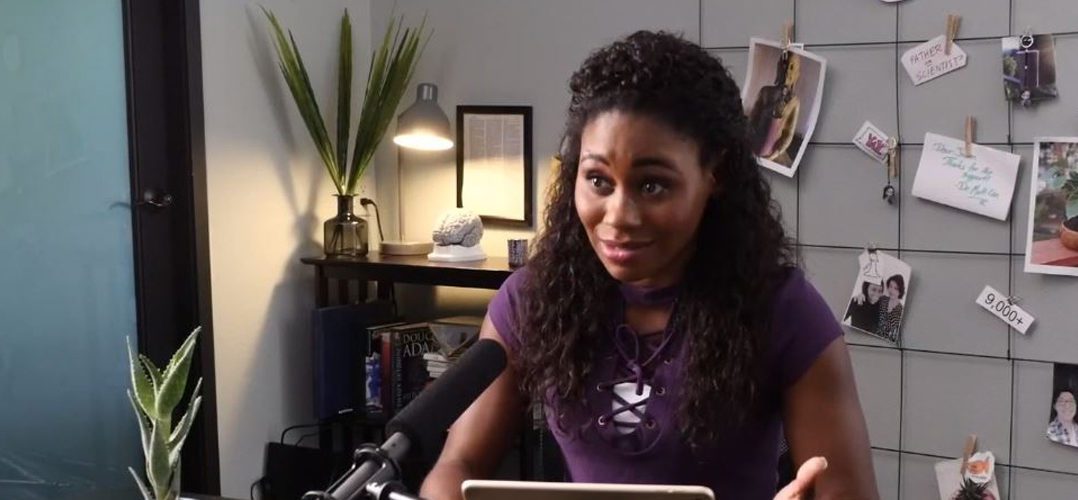Black Mirror spin-off Bandersnatch was a huge hit around the globe, prompting Netflix to further invest in interactive storytelling. According to the streaming giant’s VP of Product, Todd Yellin, “Netflix is doubling down on interactive series after the global success of Bandersnatch”. It probably also helped that the format allowed the data-driven media-streaming company to collect tonnes of user decision-making data in the process (more on that here).
Netflix’ choose-your-own-adventure format represents the latest mainstream offering in interactive storytelling, but is it really interactive?
Bandersnatch allows viewers to make decisions at various junctions and these choices then determine the story path which the episode proceeds. The result is what has been described as a network of “five endings and one trillion story combos”. But at the end of the day, the viewer doesn’t really change the story, she only chooses her own story path and since it’s not live, it’s also not a collective viewer experience. Furthermore, as with most Netflix shows, the “watercooler-moment” is missing.
Interactivity is tricky when it comes to VOD since interactivity has a lot to do with being social, live, and fully interactive. The poster child of interactive livestreaming and hugely popular is, of course, eSports. Therefore, it doesn’t come as a surprise that one of the most innovative storytelling projects in this space recently, launched on gaming platform Twitch. Since its founding in 2011, San Francisco-based Twitch has operated a wildly popular livestreaming platform for video gamers, drawing 15 million active users a day. Now, the Amazon-owned company is venturing into the world of scripted programming with an interactive sci-fi series called Artificial.
Artificial is created and produced by Emmy-winner Bernie Su (The Lizzie Bennet Diaries). It’s about an engineer who creates a robot and aims to make her more human and less artificial. The viewers are in the driver’s seat as they can give input in form of questions and polls during the broadcast. Since the episodes air live, with the actors in front of the camera in real-time, they are able to immediately act and react to the audience input. « The audience is impacting the journey as part of the collective, » Su says. While the actors wait for the audience input, the viewers see pre-recorded material to ensure a smooth broadcast. The first season of Artificial drew an average of 175,000 live viewers an episode. The second season will start in April.
Another interesting storytelling example is the live comedic telenovela El Hogar Es Donde Esta La Casa (Home Is Where The House Is) produced by – by now shut down – entertainment studio Super Deluxe and broadcast on Facebook Live. Viewers could vote during the one-hour-broadcast between two or three options using the reaction buttons you usually use to express that you like, love or are sad about something. For example, during one scene, the audience could choose between three weapons a character could grab: a knife, a boomerang, or, um, a dildo (the audience chose the sex toy, of course, because it’s the internet). Since it was broadcast live the actors had to hold position in a live version of freeze frame until the results were in. At one point, the vote screen took too long to materialise, leaving the lawyer and the evil twin staring at the camera waiting for their cue. But that’s the beauty of making live, absurdist drama for a millennial audience.
Going back to Bandersnatch, the innovation seems mostly technological rather than storytelling-wise. According to Variety, Netflix’s app had to be reworked so it could pre-cache two potential choices, rather than one, to better ensure a smooth streaming process. But it has shown how Netflix’s algorithms are able to deliver a seamless experience of processing and presenting branching story paths for individual viewing experiences on a platform with more than 100m subscribers worldwide. And as Yellin put it, Bandersnatch was just the start, so maybe interactive livestreaming will be next for Netflix.
Jason George, CEO of Telescope, has worked at the forefront of audience interactivity and technology for more than two decades and he says: “We’ve been experimenting with live video on social platforms and here’s what we’ve learnt: transplanting a “TV experience” to this medium is not what it’s about; when people are engaging with content through a small screen ‘up close and personal’ their expectation of that experience is different – they value authenticity, not necessarily high production values, and especially they expect to be part of a two-way conversation, not a one-way broadcast: they want to have their voices heard, to be able to influence what happens on screen, to have their “moment of fame” even. All this is achievable with live real-time interactivity on streaming video. New formats will be created specifically with this environment in mind – not as a bolt on to an existing idea – and that’s the exciting challenge ahead.”
Top photo: ArtificialNext on Twitch




